
Pets | Resources
UPF/UV Coating on Clothing
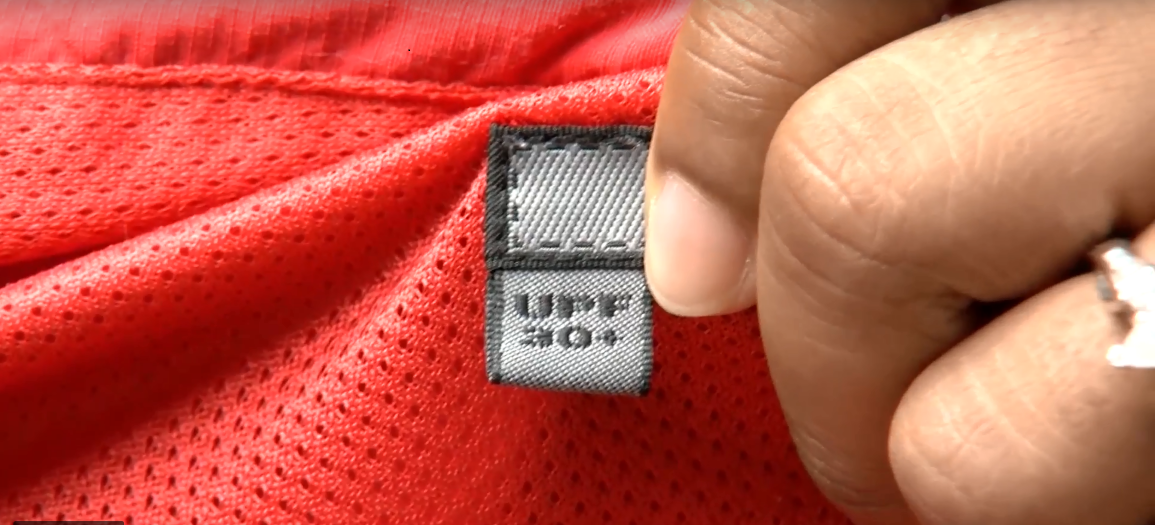
Question from Dean
Hi Debra,
Are you aware of any health dangers posed by UPF/UV treatments on clothing?
Thanks!
Debra’s Answer
First let me explain what this is.
You’ve probably heard of SPF with regard to sunscreen. That stands for Sun Protection Factor and measures the amount of time it takes for skin exposed to the sun to redden.
UPF is a similar measurement for fabric, which indicates the amount of UV radiation that penetrates a fabric and reaches the skin. To learn more about the UPF rating system and choosing UPF clothing, see this excellent article from REI: How to Choose Sun Protection (UPF) Clothing.
Now to answer your question.
Sun protection fabrics are generally made from synthetic fibers. Those that have chemical additives don’t seem to be disclosing what those chemicals are. The only UPF additive I could find was nanoparticles of titanium dioxide.
I generally don’t recommend synthetic fibers and don’t recommend chemicals that do not disclose what they are.
There are many guidelines that explain how to choose clothing that offers some protection without wearing synthetics or unknown chemicals. Any dark, tightly woven natural fiber will offer protection.
Here’s an article with more information: SUN & SKIN NEWS: Dress to Protect: 5 Things that affect How Well Your Clothes Block UV Rays
Polyester-free Umbrella
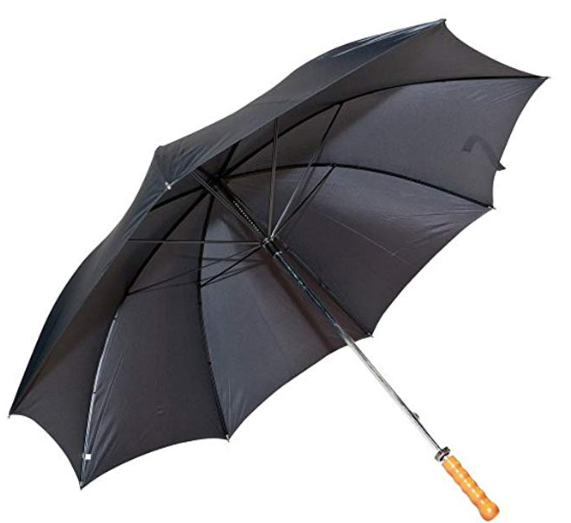
Black Oversized Nylon Umbrella from online
Question from Sue in TX
Hi Debra,
I am allergic to polyester. I used to be able to buy nylon umbrellas from Totes, but they switched to 100% polyester (at least I have not been able to find an existing Totes umbrella, at this time, that is not 100% polyester). I have searched online, for any brand, and I cannot find a nylon umbrella. Thank you for any help!
Debra’s Answer
I had no problem finding nylon umbrellas. Here’s a whole page of nylon umbrellas at amazon.com.
But while I was looking I found an interesting article about the construction of umbrellas at QUORA: Why are umbrellas made of nylon? Isn’t there a more waterproof material that could be used?
Umbrellas may disclose the basic material they are made from, but often don’t tell you they are waterproof because they are coated with Teflon or “most often” a polyurethane film.
Apparently the most common material now for umbrellas is Pongee, which is usually silk, but can be a synthetic material by the same name.
In purchasing an umbrella, try to find out if waterproofing chemicals or films have been added.
Winter Coat
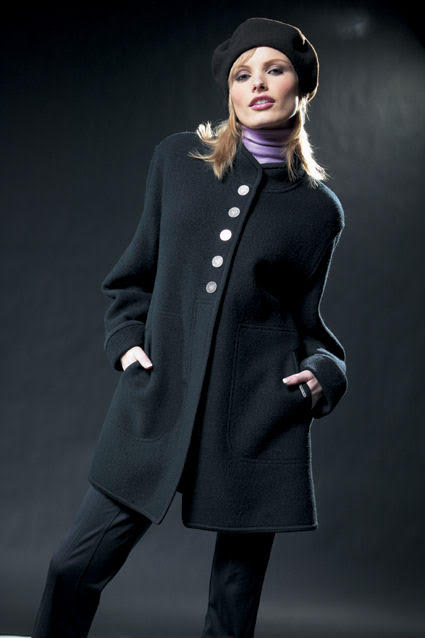
Geirger of Austria Classic Black Women’s Boiled Wool Jacket at Alpenstyle
Question from Bonnie
Hi Debra,
I have an old winter coat I have been using for years that is finally going bye bye. I need to replace it with a new one but have not had much luck over the years. I am allergic to down. Anyone have any luck with this?
Debra’s Answer
Readers, what suggestions can you offer?
I live in a fairly temperate climate, so I’m usually warm enough with several layers of cotton shirts and sweaters and scarves. I haven’t owned a winter coat in years.
But I did find a website called AlpenStyle that offers “outerwear for women [and men] manufactured by companies that reflect the best fabric quality and styling of European sweater pullovers and cardigans, coats and jackets. AlpenStyle carries three of the most prominent ladies’ outerwear clothing lines: Icelandic Design, Geiger of Austria and Skjaeveland. AlpenStyle specializes in these three producers of fine clothing because all three provide incredibly high quality products, all reflect that particular look associated with European clothing and because all three are companies with high integrity offering natural fabrics that feel good to the touch and stand the test of time.”
These are not inexpensive, but are very well made and designed to last. Plus sizes too.
What do you all do for winter coats in cold climates?
New Scratch-and-Sniff Postage Stamps Should be Banned

I finally got a whiff of the new scratch-and-sniff postage stamps at my local post office this morning.
Though I knew they were coming, I hadn’t written about them before because “scratch-and-sniff,” well, I didn’t know for sure if that meant one needed to scratch them before you could smell them.
But now I can tell you with certainty that they DO smell before scratching, just like those perfume inserts in magazines.
The scent actually upset my stomach and triggered me to rush to the nearest store to get something to eat/
To me, this is just an unacceptable infringement on my human rights.
Last week I wrote about a 2016 ruling a woman’s chemical sensitivity was a disability under the American’s with Disabilities Act (ADA) because it interfered with the major life activity of breathing.
The ruling outlines accommodations employers may need to make in the workplace for those with fragrance allergies, which go so far as to ask or require other employees to abstain from wearing or using scented products.
But it’s not just about allergies. Synthetic fragrances emit toxic chemicals . We are all being exposed now to yet another source of toxic chemicals for “fun.”
I don’t want scented stamps in my pile of mail, but I can’t opt-out of the exposure without opt-ing out of the United States Postal Service, which I have a right to use as a citizen of this country.
Please don’t buy these stamps. And encourage others to not buy them too. And how can we get the Post Office to stop selling them?
The masquerade of synthetic-fragranced products as “natural”
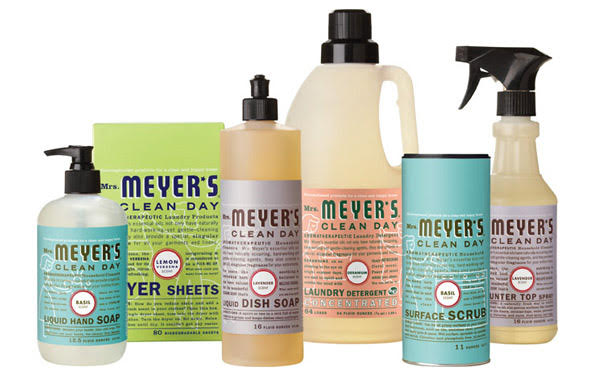
Question from Jane
Hi Debra,
You are one of our “household gods” and have been for many years. It is such a relief to find a source of information about chemical sensitivities and allergies that is non-judgmental and so widely and wonderfully informative!
My specific concern right now is Mrs. Meyer’s products, especially her laundry products. I have only moderate MCS, but I cannot use Mrs. Meyers at all. Several years ago, I actually had to get up in the middle of the night and change our sheets because they had been washed with her detergent.
The company makes so many claims to be fresh and natural, and yet their scents do not smell at all natural to me! For example, I know real live honeysuckle and its beautiful scent. Mrs. Meyer’s version of “honeysuckle” is not what I recognize as the real thing!
Yet I read and hear, on YouTube especially, people I would think of as intelligent just rhapsodizing about Mrs. Meyers products and, worse, convincing other people to buy and use them! What are the long-term effects of exposure, especially to children, of these highly fragranced, super-hyped items?
I know you share a longstanding concern about fragranced personal care and household items. But this line of products is marketed with such sweet promises that they make me think of the scene in the Disney film Snow White, when the witch looks at the beautiful apple she has prepared for Snow White, and we see a skull and crossbones take shape over that lovely red surface. Isn’t this what is happening here?
Thank you for any comments you can make!
Debra’s Answer
It’s not a secret that Mrs. Meye’s products contain synthetic fragrances. They disclose this right on their Ingredient Glossary.

Note they are not organic, so whatever pesticide is in the natural material gets concentrated into the essential oil. My standard is ONLY certified organic essential oil (and if you see anything otherwise on my website please let me know so I can remove it).
I agree with you that this is exactly like the poison apple from Snow White.
There has been a period of time where our product purchases have been influenced by how well advertising appeals to us, rather than what we need and rather than evaluating the product. I think we’ve all be there. I know I personally have made an enormous shift from buying things because advertising convinced me to buy, to buying based on my real needs to sustain my own life and health and planet.
It’s a whole different mindset to consider how to sustain a life, but that is the question Larry and I discuss every day. Will making a particular choice contribute to sustain ourselves, our health, our relationship, our ecosystems, or will it contribute to their destruction. This is the basis of our life together.
A reader asked me the other day with so much information available, that often conflicts, who do we listen to? For me, it’s not WHO, it’s WHAT is the result of using that information in my life.
Larry and I sometimes talk about using toxic chemicals for glamour, fun, and profit. A face covered with toxic cosmetics is no longer beautiful to me, bright blue food doesn’t make me want to eat it. Give me a farmer’s market and linen sheets and essential oils and water fresh from a spring and I will be very happy and deeply satisfied.
Now, about Mrs, Meyers. I think the biggest problem here is that their message and their ingredients are not aligned. And that is a problem of Truth in Advertising. They are making you believe that the product is natural and pleasurable when it’s not. There are laws about this.
Here’s a website where you can report companies making bad claims, take legal action, and more (or so they say, I have no experience with them): TruthIn Advertising.org
I could spend all day reporting false claims but I would rather spend my time educating consumers and making more known companies that are making true claims and using toxic-free materials.
There! I did have a few comments on this.
Dharma Trading Company
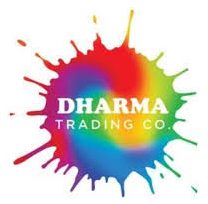 This is one of my local California stores that has been around a long time—1969! They are basically a fiber art supply store, so there are a lot of things you may not be interested in, but I’m listing them here because fiber arts are about putting art on fabric and clothing, and they carry a good selection of natural fiber fabrics, clothing and other dyeables that can be used “undyed.” They have many types of cotton fabrics, including some organic and even 100% cotton for making sweat clothes, hemp and hemp blends, linen and linen blends, and many silk fabrics. Also extra wide natural fiber fabrics undyed for curtains or bedlinens. Clothing for babies, kids, women and men include such things as undyed cotton tank dress for only $16 and cotton sweat pants and sweat shirts for under $20. Clothing is not organic, but no dye and all sewn with cotton thread. Plus bags, wallets, totes. Yarns, lace, ribbons. Almost anything and everything. And they sell all kinds of dyes and markers (not all nontoxic) to make your own creations.
This is one of my local California stores that has been around a long time—1969! They are basically a fiber art supply store, so there are a lot of things you may not be interested in, but I’m listing them here because fiber arts are about putting art on fabric and clothing, and they carry a good selection of natural fiber fabrics, clothing and other dyeables that can be used “undyed.” They have many types of cotton fabrics, including some organic and even 100% cotton for making sweat clothes, hemp and hemp blends, linen and linen blends, and many silk fabrics. Also extra wide natural fiber fabrics undyed for curtains or bedlinens. Clothing for babies, kids, women and men include such things as undyed cotton tank dress for only $16 and cotton sweat pants and sweat shirts for under $20. Clothing is not organic, but no dye and all sewn with cotton thread. Plus bags, wallets, totes. Yarns, lace, ribbons. Almost anything and everything. And they sell all kinds of dyes and markers (not all nontoxic) to make your own creations.
Good Things Boutique
 This is the online boutique of the daughter of one of my long-time readers, who has done a fine job of putting together collections of organic cotton and ethical clothing for women and men. Read product descriptions to choose items that meet your specific needs.
This is the online boutique of the daughter of one of my long-time readers, who has done a fine job of putting together collections of organic cotton and ethical clothing for women and men. Read product descriptions to choose items that meet your specific needs.
Duralex
Wisconsin Goes Fragrance-Free
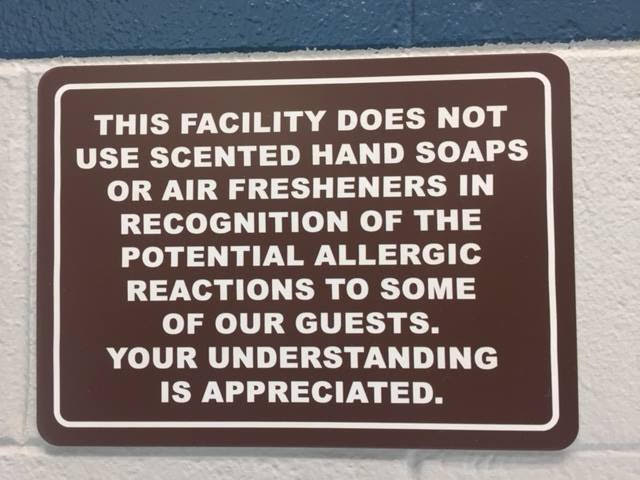
The above sign was spotted in a roadside rest area in restroom, maintained by the state of Wisconsin.
Other public places could do the same.
This may be a response to a 2016 ruling a woman’s chemical sensitivity was a disability under the American’s with Disabilities Act (ADA) because it interfered with the major life activity of breathing.
The link in the above paragraph outlines accommodations employers may need to make in the workplace for those with fragrance allergies, which go so far as to ask or require other employees to abstain from wearing or using scented products.
I remember when smoking cigarettes was first banned in public places and now it is widespread. So I am optimistic the same will happen with fragrance.
Toxic Free Paper Notebooks
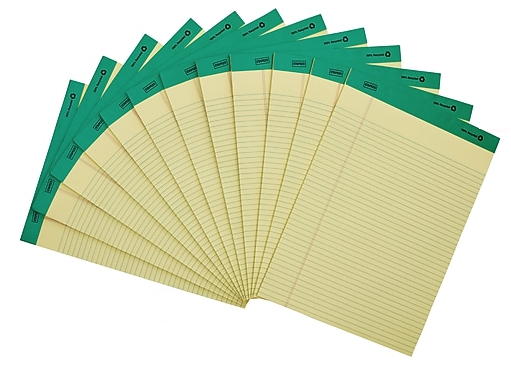
These are the recycled paper notepads I use from Staples. (I don’t like spiral-bound notebooks).
This week I received TWO emails asking about paper office products after not receiving one questions about them in almost forty years of doing this work.
I’ve never addressed this because I’ve never noticed a need to. I buy various recycled paper pads at Staples and I’ve never noticed an odor.
Bonnie wrote this to me:
I have been sorting my old papers which I keep in paper 2 pocket folders. 2 types have solid colors, one with a smooth surface, the other less smooth. I have manila folders which I assume are safe. I have a bank of America folder which is glossy. Also have spiral college ruled paper notebooks. The front are solid colored and the back looks like cardboard.
The back has an odor. I was thinking to buy paper only next time. Are any of these toxic? Thank you.
This is from Mary:
I had been using Mead’s 5X7 150 page notebook to keep track of what I eat, how I feel, etc., but they smelled strongly of disinfectant and I had to air each one out page by page over many days.
I found these notebooks at OfficeSupply. They have no odor. I thought maybe your readers might like to know about them. I don’t knotice an odor with things like steno pads but I needed this style. They are only 120 pages though.
Anyone else having trouble with paper notebooks?
And anyone else have favorite sources for notebooks with no odors?

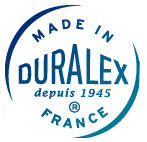 Clear tempered glass tableware made from heat-tempered glass.
Clear tempered glass tableware made from heat-tempered glass. 




